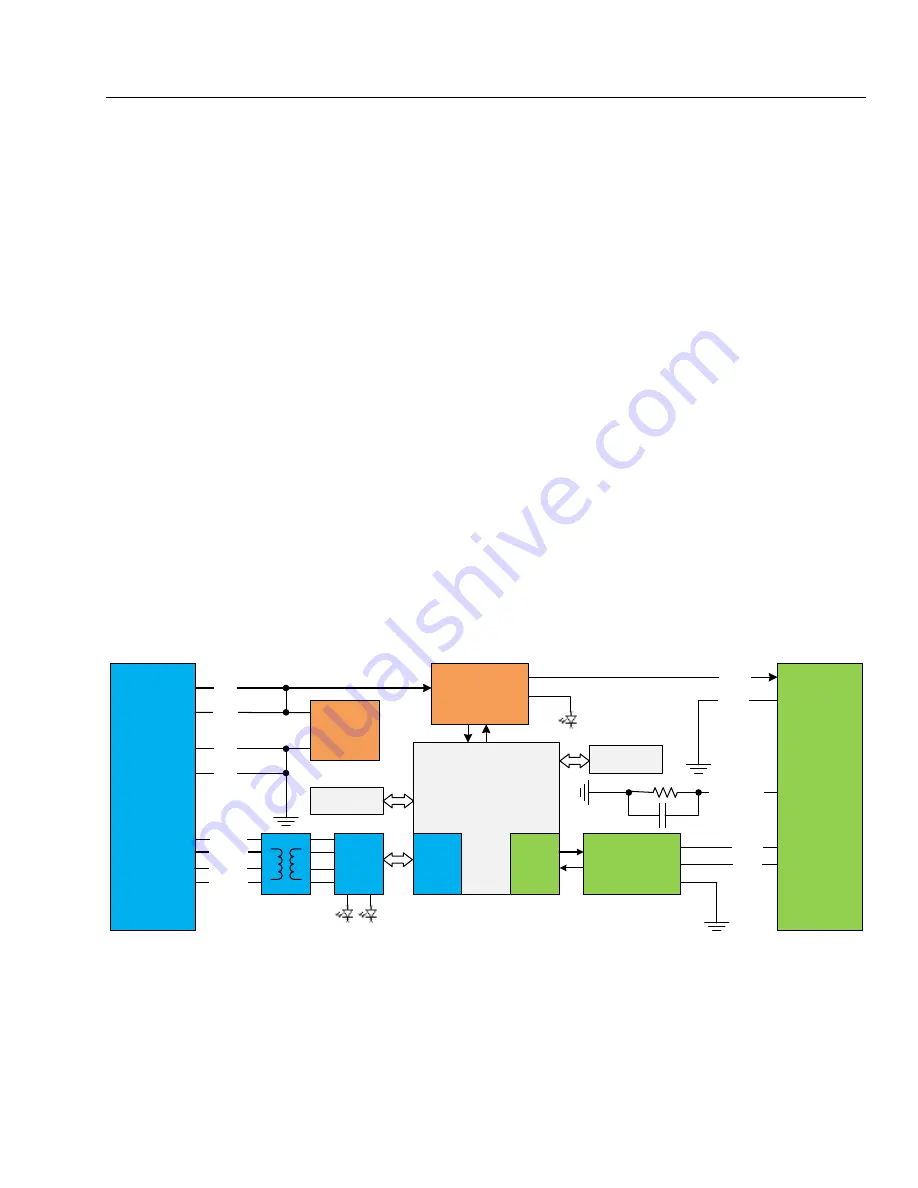
UMAX140900. Ethernet to CAN Converter. Version 5
Page: 5-35
2
CONVERTER DESCRIPTION
The Ethernet to CAN Converter is a simple device converting CAN frames into UDP or TCP IP
datagrams and sending them over the Ethernet network. The device can also convert UDP or
TCP datagrams into CAN frames.
The converter has one CAN and one Ethernet port. It supports a high-speed CAN with baud
rate up to 1Mbit/s and a fast 100Mbit/s Ethernet. All standard and extended CAN frames,
including data and remote frames, are supported.
The power can be passed through to the CAN port. Protection is provided.
The converter contains a web server to setup configuration parameters and monitor the
internal state of the converter using a web browser. The user can also update the converter
firmware using the web browser.
A simple command-line
AxioDisc.exe
Windows application is provided to locate a converter
on the LAN.
To ensure low latency in processing CAN and Ethernet messages, the converter software runs
under control of a real-time operating system.
The converter is designed to work on off-road machinery or in a harsh industrial environment
with power transients, high humidity, and vibrations.
2.1 Hardware Block Diagram
The converter hardware block diagram is presented in Figure 1.
PHY
MAC
CAN
Microcontroller
CAN
Connector
CAN
Transceiver
ETH_TX-
Ethernet
Connector
ETH_RX-
CAN_H
CAN_L
Power
Supply
BAT +
BAT -
Switch
POUT +
POUT -
CAN_SHIELD
EEPROM
BAT+
BAT -
Ethernet Link/Act
Power
FLASH
Ethernet 10/100
Figure 1. The Converter Hardware Block Diagram
The converter is powered from the Ethernet connector using dedicated power lines. The power
from the Ethernet connector can be delivered to the CAN connector through a switch
controlled by a microcontroller.
The Ethernet transformers with PHY, together with the CAN transceiver, provide Ethernet and
CAN physical interfaces.






































